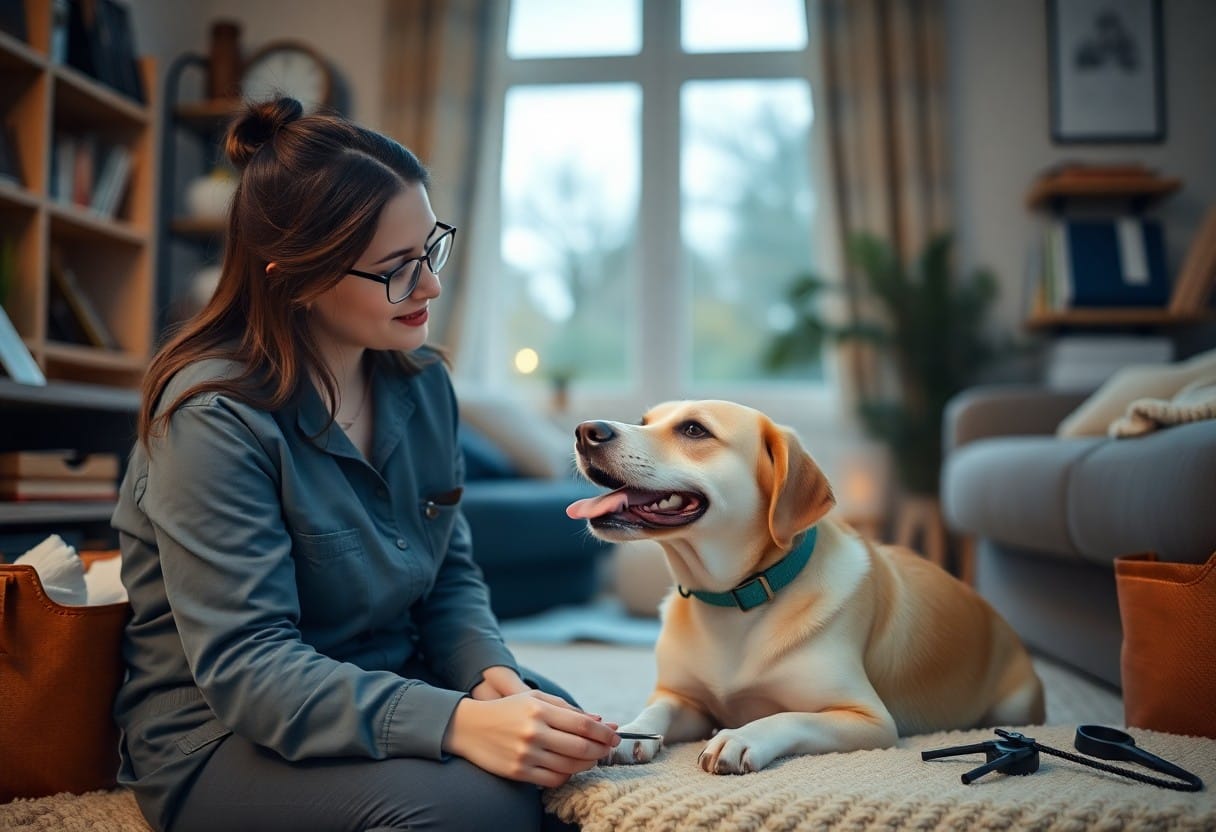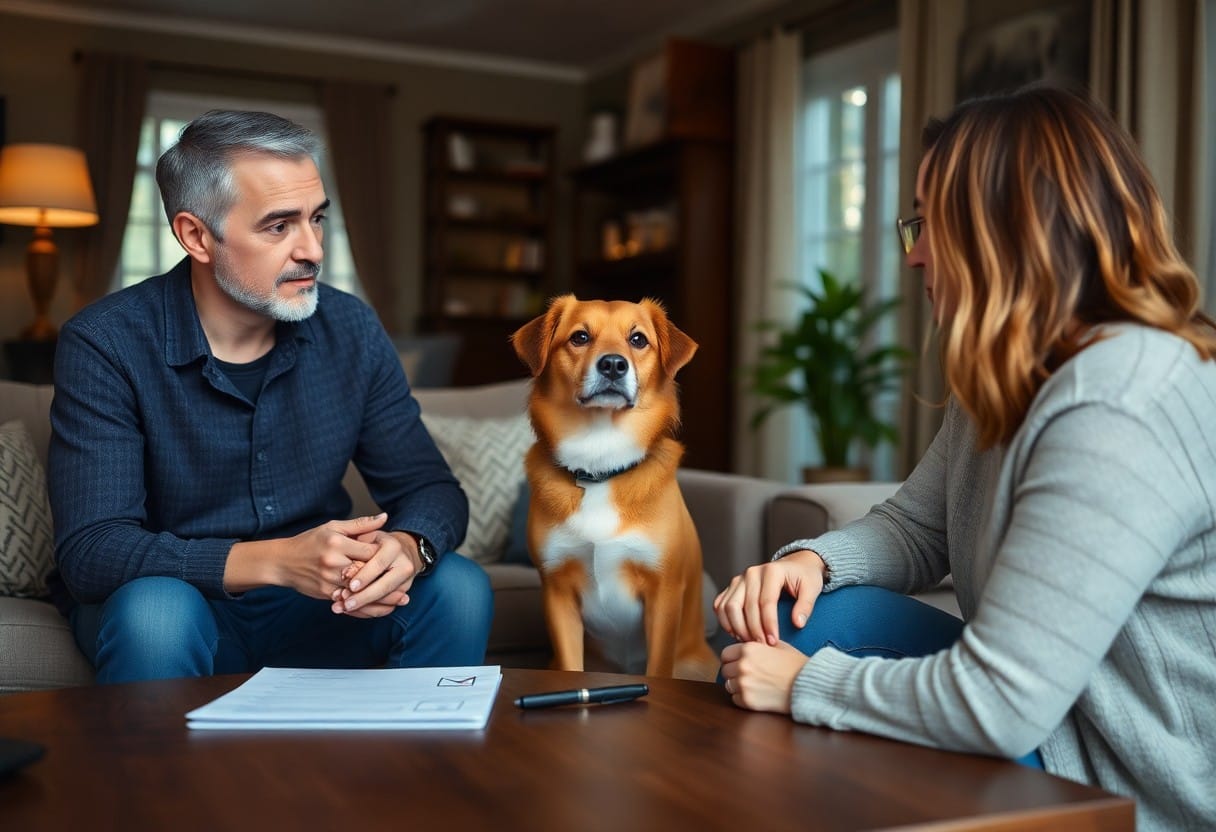There’s a lot at stake when you’re hiring a dog sitter for your furry friend. Making the wrong choice can lead to stressful situations for both you and your pet. In this post, you’ll learn about common pitfalls that dog owners often face during the hiring process, from overlooking vital qualifications to failing to establish clear communication. By avoiding these mistakes, you can ensure that your dog receives the best care while you’re away, giving you peace of mind and keeping your pup happy.
Key Takeaways:
- Thoroughly vet potential dog sitters by checking their references and reading reviews from other pet owners.
- Clearly communicate your dog’s specific needs, routines, and any special instructions to ensure proper care.
- Arrange a meet-and-greet with the sitter and your dog to evaluate their compatibility before finalizing the hiring process.
The Red Flags of Dog Sitting Services
Knowing how to spot red flags can save you from hiring the wrong dog sitter. When reviewing potential candidates, keep an eye out for inconsistencies or anything that feels off. Whether it’s their experience or communication style, the signs can be subtle but pivotal in ensuring your dog’s safety and happiness while you’re away.
Warning Signs in Dog Sitter Profiles
Profiles that lack professionalism can be a cause for concern. If a sitter’s profile is riddled with spelling errors or incomplete information, it may indicate a lack of attention to detail. Additionally, be wary of sitters who don’t clearly list their qualifications or provide references, as this can suggest they don’t have a strong background in dog care.
Red Flags During Initial Conversations
Your conversations with potential dog sitters can reveal a lot. If the sitter seems disinterested or provides vague answers, trust your instincts. They should express genuine interest in understanding your dog’s needs, asking detailed questions about their habits, diet, and behavior. Communication should feel fluid, but if there’s an odd lack of engagement or reluctance to share details, it’s a strong indication that they may not be fully committed to the responsibility of caring for your pet.
During those early discussions, pay attention to their willingness to meet or interact with your dog before the actual sitting. A sitter who hesitates to establish a rapport or appears uneasy around dogs raises a significant red flag. Their responses should reflect confidence and enthusiasm; if they seem dismissive of important topics like your dog’s medical history or overall well-being, take it as a sign to continue your search. A qualified caregiver should be eager to engage with both you and your pet, ensuring that they are a good fit for your family’s needs.
Credentials That Matter: Beyond the Basics
Evaluating a dog sitter’s credentials goes beyond just checking for pet care experience. Look for individuals who possess specific qualifications that enhance their capability to care for your pet effectively. These can include formal education in animal care or behavior, along with additional certifications in pet first aid and CPR. Such credentials indicate a deeper understanding of dog behavior, health, and safety, ensuring that your pooch is in the hands of a well-informed caregiver.
Certifications and Training to Look For
Certifications from recognized organizations like the National Association of Professional Pet Sitters or the Pet Sitters International provide assurance of a sitter’s commitment to their craft. Seek candidates who have completed training in animal behavior, obedience, or emergency response. This specialized knowledge equips them with the skills to handle diverse situations and to keep your dog both engaged and safe.
Background Checks and Insurance Essentials
Conducting background checks is vital to ensure the safety and security of your pet and home. A thorough vetting process should include criminal history checks as well as verification of previous employment and references. Furthermore, a dog sitter’s insurance coverage protects you from liability in cases of accidents or injuries, adding an important layer of security.
Ensuring your dog sitter undergoes a comprehensive background check not only provides peace of mind but also verifies their professionalism. Many reputable services conduct these checks before hiring, giving you confidence that the individual you’re trusting with your furry friend has a clean record. Additionally, pet sitters carrying liability insurance demonstrate their commitment to responsible pet care. This protects you from unexpected financial burdens should an incident occur, ensuring that both your pet and your home receive the utmost attention and protection.
Communication Breakdowns: The Pitfalls to Avoid
Miscommunication often leads to unnecessary stress for both you and your dog sitter. Without proper dialogue, important details can easily be overlooked. Be proactive in discussing your dog’s routine, habits, and any special requirements. Failing to establish a strong line of communication can result in frustration and anxiety for both parties, as outlined in 4 Mistakes New Pet Sitters Make—and How to Avoid Them.
Setting Clear Expectations with Your Dog Sitter
Before your dog sitter arrives, ensure that all expectations are laid out clearly. Discuss your dog’s daily routine, preferred walking times, dietary needs, and any behavioral quirks. Leaving nothing to chance helps your sitter provide the best possible care while minimizing potential issues, allowing you both to feel secure in the arrangement.
Importance of Regular Updates During Care
Regular updates from your dog sitter help bridge the gap between you and your pet while you’re away. Knowing how your dog is doing offers peace of mind and allows you to address any issues as they arise. Consistent communication aids in ensuring your dog remains happy and healthy, giving you the chance to enjoy your time away.
Receiving updates offers reassurance that your furry friend is being well cared for. You can request photos or messages at set times during the day to gauge your dog’s behavior and well-being. This routine keeps you informed and helps you establish trust with your dog sitter, promoting a positive experience for everyone involved. Your dog’s happiness is paramount, and regular check-ins will help manage any concerns you might have, ensuring a smoother transition for both you and your beloved pet.

The Cost-Quality Dilemma: Don’t Sacrifice for Savings
Choosing a dog sitter solely based on price can lead to regrettable outcomes. While saving money is tempting, opting for the cheapest service often means sacrificing quality, which can compromise the care your dog receives. Skilled and experienced sitters usually charge more for good reason — they bring valuable insights, professionalism, and peace of mind. You can learn more about maintaining that balance by checking out the Top 3 Mistakes People Make When Hiring a Pet Sitter.
Understanding Pricing Structures in Pet Care
Pricing for dog sitting varies widely based on location, services included, and the sitter’s experience. Generally, more seasoned sitters offer comprehensive packages that may include additional services such as exercise routines, grooming, and regular updates. It’s beneficial to request a detailed breakdown of inclusions to fully grasp what you’re paying for. This transparency helps you evaluate whether the sitter’s cost aligns with your expectations.
Investing in Quality: Why It Matters
Quality pet care is an investment in your pet’s well-being. A skilled sitter ensures your dog receives proper attention, exercise, and social interaction, reducing anxiety and enhancing happiness while you’re away. You might encounter cheaper options, but these often lack the experience or personalized care that your furry friend deserves.
Choosing a higher-quality dog sitter often translates to a more fulfilling experience for your pet. An experienced caregiver understands the significance of routines, enforces boundaries, and provides necessary companionship. Moreover, they are trained to handle emergencies, offering you peace of mind in knowing your canine companion is in trustworthy hands. Ultimately, investing in quality not only benefits your dog but also alleviates stress for you, allowing for a worry-free trip. Opting for the right sitter ensures your pet receives the care and attention they need while you’re away.
The Personal Fit: Assessing Compatibility with Your Dog
Ensuring compatibility between your dog and the sitter is necessary for a successful sitting experience. An ideal sitter understands your pet’s unique personality and behavioral quirks. Engage potential sitters in conversations about their previous experiences to gauge their comfort level with different dog temperaments. For more insights, check out the 5 Mistakes People Make When Hiring a Pet Sitter.
Dog Behavior Assessment Techniques
Employing behavior assessment techniques helps determine whether your dog will feel at ease with the sitter. Observing your dog’s reactions to different individuals can reveal their comfort levels. You might involve the sitter in your dog’s routine, observing how your pet interacts during feeding or playtime. Note, consistent body language and positive signals like tail wagging are good indicators of a suitable match.
Trial Sessions: A Crucial Step Before Commitment
Trial sessions offer an invaluable opportunity for you and the sitter to see how they interact with your dog. These short visits allow you to observe firsthand how your pet responds to the sitter, providing insights that can’t be gathered from an interview alone.
During a trial session, set aside about an hour for the sitter to bond with your dog in a relaxed setting. This observation allows you to assess their responsiveness to commands and their ability to engage in your dog’s preferred activities. If your dog seems anxious or disinterested, it may be a sign that this sitter isn’t the right match. Use these sessions to foster a trusting environment, which can ease your worries about leaving your furry friend in new hands.
To wrap up
Ultimately, avoiding common mistakes when hiring a dog sitter can significantly enhance your pet’s care and your peace of mind. By thoroughly researching candidates, checking references, and ensuring compatibility with your dog, you set the stage for a successful arrangement. Don’t overlook the importance of clear communication regarding your dog’s needs and your expectations. With careful consideration, you can find a reliable sitter who will treat your furry friend with the love and attention they deserve.
Q: What qualifications should I look for in a dog sitter?
A: When hiring a dog sitter, it’s imperative to check for qualifications that demonstrate their experience and ability. Look for certifications in pet first aid or dog training, as these indicate a commitment to understanding canine behavior and safety. Additionally, consider their experience with specific breeds or behavioral issues your dog may have. Customer reviews and testimonials can help gauge their reliability and pet care skills.
Q: How can I ensure my dog sitter understands my dog’s needs?
A: To ensure your dog sitter is a good fit for your pet, arrange a meet-and-greet before making a decision. This allows your dog to meet the sitter and gauge their comfort level. During this time, discuss your dog’s routine, dietary needs, exercise habits, and any behavioral quirks. Providing a detailed care guide or notes can also help the sitter be better prepared to meet your dog’s specific requirements and maintain consistency.
Q: What are the red flags to watch out for when interviewing potential dog sitters?
A: As you interview potential dog sitters, look out for any signs of unprofessionalism. For example, a lack of enthusiasm for your dog or an inability to answer questions about pet care can be warning signs. Be cautious if the sitter is unwilling to provide references or discuss their previous experience with other dogs. Additionally, watch for inconsistencies in their responses about dog care practices and their approach to handling emergencies.

Leave a Reply